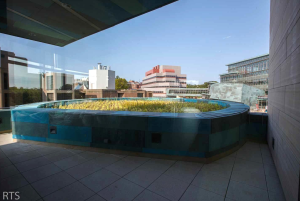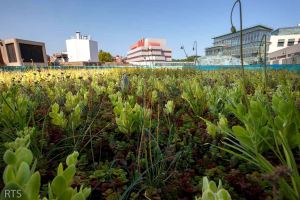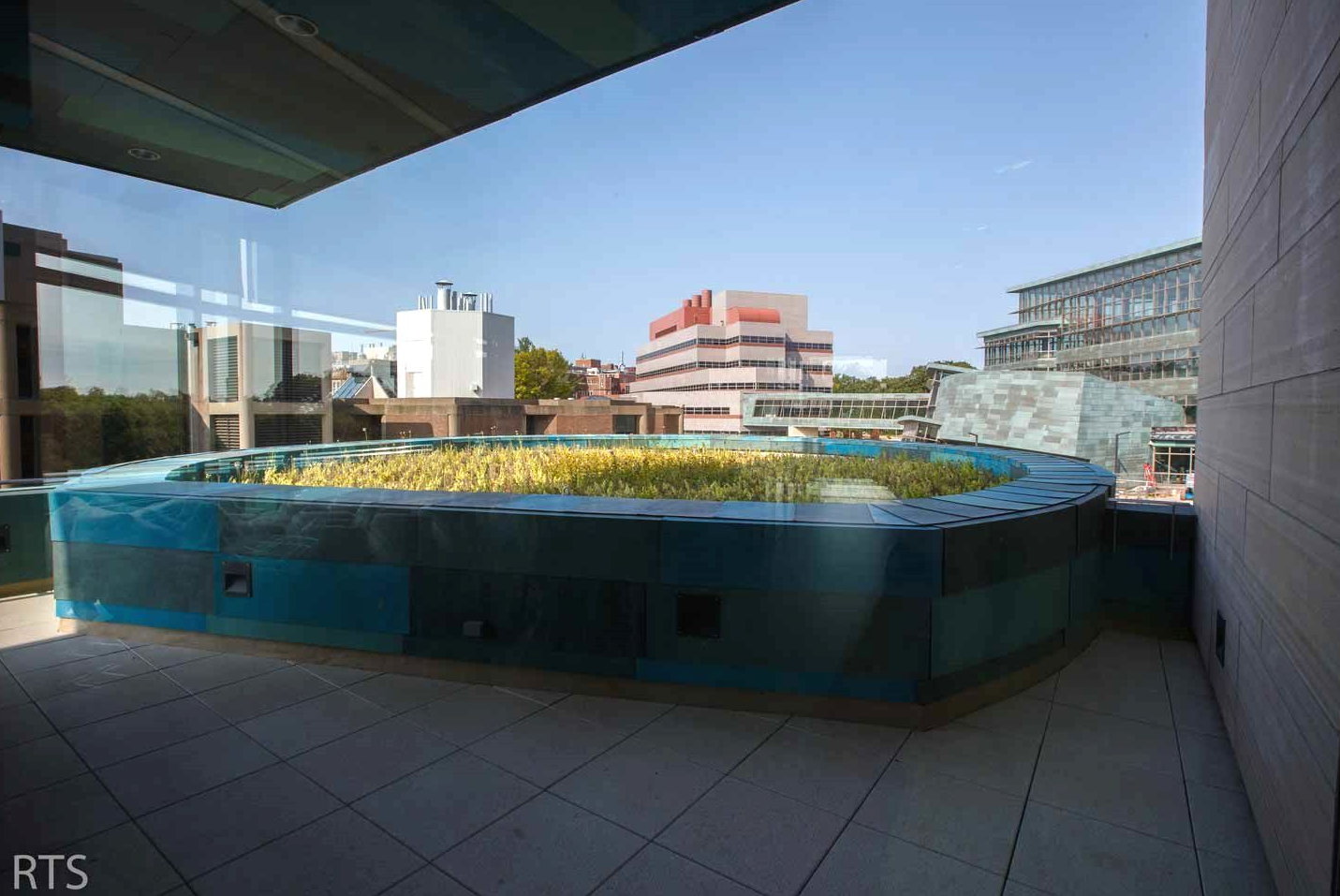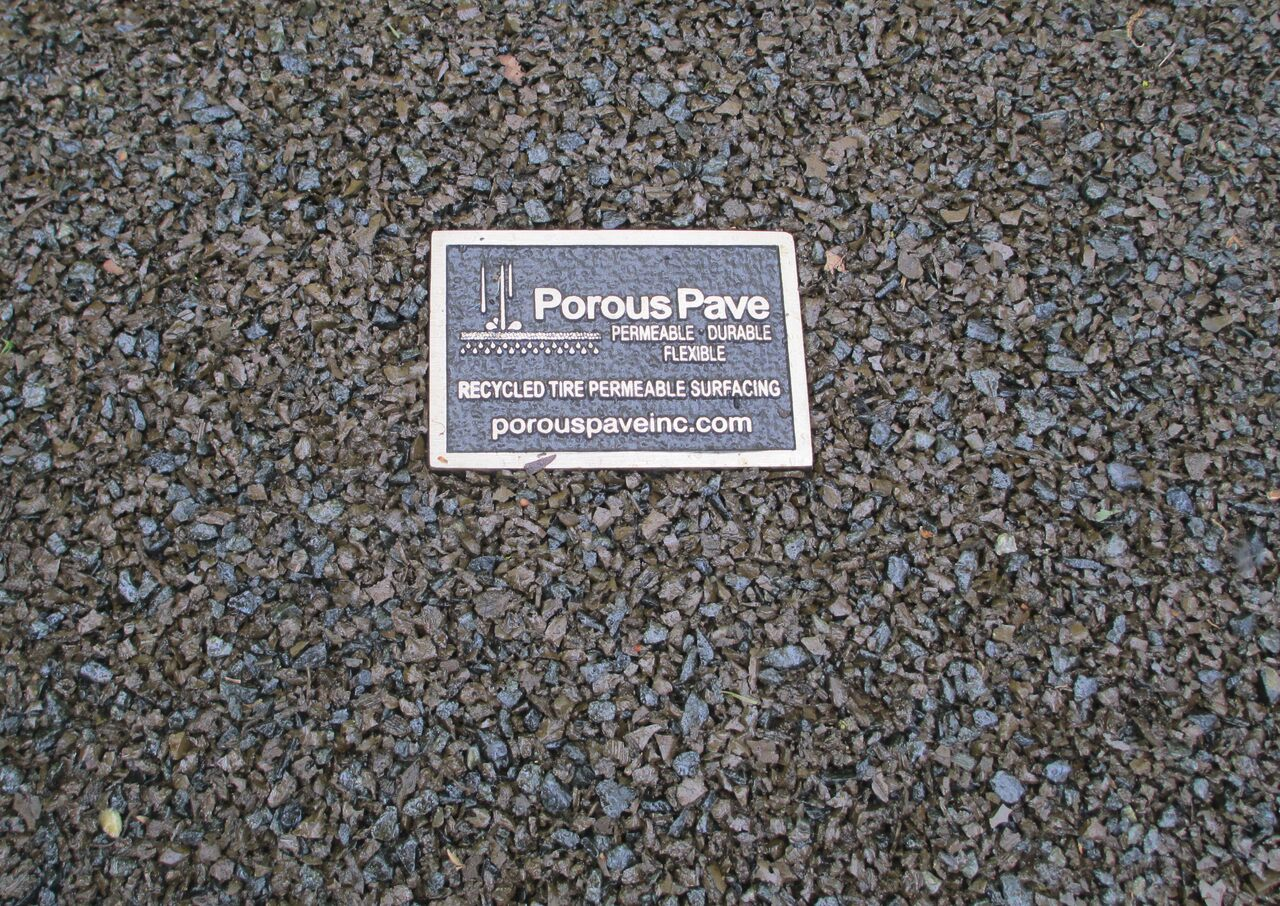Established just 59 days after Iowa became a state in 1847, the University of Iowa, Iowa City, boasts a number of firsts. In 1855, it became the first U.S. public university to admit men and women; at that time, its enrollment consisted of 124 students—41 of which were women. In 1873, it was the first school to grant a law degree to a woman. In 1895, it became the first university to place an African American on a varsity sports team.

The university’s new Pappajohn Biomedical Discovery Building was designed and built with sustainability in mind. PHOTO: Roof Top Sedums LLC
In more recent years, the university has strived to lead via its environmental efforts. As a Green Power Partner of the Washington, D.C.-based U.S. Environmental Protection Agency, the university pledges to reduce the environmental impact of electricity generation through the use of renewables. In 2010, it established its first sustainability plan—2020 Vision UIowa Sustainability Targets, which contains the following goals:
- Become a Net-negative Energy Consumer
- Green Our Energy Portfolio
- Decrease Our Production of Waste
- Reduce the Carbon Impact of Transportation
- Increase Student Opportunities to Learn and Practice Principles of Sustainability
- Support and Grow Interdisciplinary Research in Sustainability-focused and Related Areas
- Develop Partnerships and Advance Collaborative Initiatives, both Academic and Operational
Among the University of Iowa’s strategies to achieve its sustainability goals is ensuring all new construction and major renovations on campus achieve a minimum LEED Silver certification from the U.S. Green Building Council, Washington.

The 200,000-square-foot, 6-story building, which officially opened in October 2014, boasts many environmentally friendly attributes. PHOTO: Scott Nagel
As such, the university’s new Pappajohn Biomedical Discovery Building was designed and built with sustainability in mind. The 200,000-square-foot, 6-story building, which officially opened in October 2014, boasts many environmentally friendly attributes, including glow-emitting sealants, paints, carpet and other materials; water-efficient landscaping; and recycled content and regional materials. It also achieves an-other university first: three green roofs, one of which provides students the opportunity to grow medicinal plants.
Opting for Trays
Des Moines, Iowa-based landscape architecture firm Confluence has been completing projects at the University of Iowa for many years through its Iowa offices—Des Moines and Cedar Rapids. Confluence was hired by the project’s architect of record, Rohrbach Associates PC Architects, Iowa City, to complete landscaping around and on top of the Pappajohn Biomedical Discovery Building in the form of three green roofs that total approximately 6,440 square feet. Despite the building’s consider-able roof area, the design team opted to install the green roofs on lower roof areas upon which building occupants would be looking. The rest of the roof cover is a reflective membrane system.
Confluence provided the layout for a modular green roof on the three distinctive roof areas. Patrick Alvord, PLA, RA, LEED AP, a principal in Confluence’s Cedar Rapids office, notes the chosen tray system was off-the-rack, which is what made it appealing to him and his colleagues. “We spent a lot of time talking to the manufacturer and they were just great to work with,” Alvord says. “We had a number of case studies of work they had done in the Chicagoland area that had proven very successful, so we had a very high level of comfort right out of the gate.”
Alvord opted to use the 6-inch-deep tray model because it would provide some flexibility in the plant materials that could be specified. “We were able to specify different plant materials in the plan of the roof to coordinate with shade, densities and location,” he says. “In areas where the roof would be highly visible from floors above, we did some patterning with the plants. In areas where we had the opportunity to go deep, we planted deeper-rooting plants that will grow taller and provide a denser plant palette.”
The plants are a mix of native and adaptive Iowa plants, as well as recommendations from the green-roof supplier. “It’s a mix of perennials, grasses and forbs, ranging from sedums to liatris to a number of different things,” Alvord notes.




Be the first to comment on "Green Roof Provides Learning Opportunities at the University of Iowa’s Pappajohn Biomedical Discovery Building"